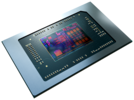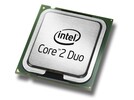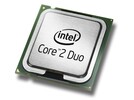AMD Ryzen 5 7640U vs Intel Core 2 Duo P8400 vs Intel Core 2 Duo T9600
AMD Ryzen 5 7640U
► remove from comparison
The Ryzen 5 7640U is a Phoenix family processor that was unveiled in H1 2023. The mid-range laptop chip has 6 SMT-enabled cores (12 threads) running at 3.5 GHz to 4.9 GHz. Those Zen 4 architecture cores are mated to the Radeon 760M integrated graphics adapter; the latter is about as fast as the aging Intel Iris Xe options.
Furthermore, the 7640U is one of the first AMD processors to support Ryzen AI which is AMD's answer to Intel's DL Boost and GNA technologies.
Architecture & Features
Phoenix family chips are powered by the Zen 4 architecture, much like Dragon Range family chips are. The latter however lacks hardware AI workload acceleration capabilities that Phoenix has.
More importantly, Zen 4 introduces AVX512 support (which Zen 3 chips did not have) and, thanks to a plethora of other improvements including larger caches/registers/buffers across the board, is set to deliver a double-digit IPC improvement.
Elsewhere, the 7640U has 16 MB of L3 cache and USB 4 support (therefore, Thunderbolt is supported as well). The chip is compatible with DDR5-5600 and LPDDR5x-7500 RAM which is really impressive as of H1 2023.
A system powered by this Ryzen 5 will have access to twenty PCIe 4 lanes; this means a speedy enough NVMe SSD will be able to deliver speeds up to 7.8 GB/s.
Systems powered by this APU are expected to run 64-bit Windows 11, 64-bit Windows 10, or Linux. Like most laptop chips, the 7640U is neither overclockable nor user-replaceable. It gets soldered down for good (FP7, FP7r2, FP8 socket interfaces).
Performance
While we have not tested a single system built around the 7640U as of December 2023, it's safe to expect the chip to be at least 10% faster than the Zen 3 Plus-powered Ryzen 5 6600U (6 cores, 12 threads, up to 4.5 GHz).
Your mileage may vary depending on how high the CPU power limits are and how competent the cooling solution of your laptop is.
Graphics
The Radeon 760M has 8 CUs (512 shaders) running at up to 2,600 MHz. While not great for gaming (unless you are fine with resolutions such as 900p and low detail settings), the iGPU will let you use up to 4 monitors with resolutions as high as SUHD 4320p. It also HW-decodes and HW-encodes the most widely used video codecs including AV1, HEVC, AVC without breaking a sweat.
Power consumption
The 7640U has a long-term power limit (default TDP) of 28 W that laptop makers are free to change to anything between 15 W and 30 W. Either way, an active cooling solution is a must for any system powered by the chip.
Last but not the least, the 7640U is manufactured on TSMC's 4 nm process for high, as of late 2023, energy efficiency.
Intel Core 2 Duo P8400
► remove from comparison
The Intel Core 2 Duo P8400 is a dual core processor for laptops. It features 2.26 GHz and a shared level 2 cache of 3 MB. Due to the smaller cache (Core 2 Duo T-Models got usually 6 MB at this clock rate), the TDP is only 25 Watt (instead of the 35 Watt of the T-models).
The performance of the P8400 is on par with the fast Turion II Ultra with about 2.4 to 2.6 GHz. Modern demanding games like Supreme Commander may be limited by the CPU performance. High end gamers should choose a higher clocked Core 2 Duo (or Core i5 / i7).
The P8400 uses a Penryn (Montevina Update) core that features 2 integer units, 1 floating point unit, 1 load unit, and 1 store unit in a 14-stages long pipeline. Due to the Wide Dynamic Execution Technology, the core is able to simultaneously execute up to four instructions.
The integrated Enhanced Speedstep is able to downclock the core dynamically as low as 800 MHz to save power (in idle mode).
The Core 2 Duo P8400 can be used in a Socket P socket with 479 pins: Socket P / Micro Flip-Chip Pin Grid Array (Micro-FCPGA) requires 479-pin surface mount Zero Insertion Force (ZIF) socket (mPGA479M socket) or Micro Flip-Chip Ball Grid Array (Micro-FCBGA) for surface mount (479-ball)
Intel Core 2 Duo T9600
► remove from comparison
The Intel Core 2 Duo T9600 is a high end dual core CPU for laptops (at the time of introduction). Compared to the faster T9900 it does not support the new power saving C1E state. The newer Core 2 Duo P9700 offers a similar performance but features a lower TDP of 28 Watt.
Due to the high clock speed, the T9600 offers enough performance for demanding games (in 2009) and applications.
The T9600 uses a Penryn core that features 2 integer units, 1 floating point unit, 1 load unit, and 1 store unit in a 14-stages long pipeline. Due to the Wide Dynamic Execution Technology, the core is able to simultaneously execute up to four instructions.
The integrated Enhanced Speedstep is able to downclock the core dynamically (in idle mode).
The Core 2 Duo T9600 can be used in a Socket P socket with 479 pins.
| Model | AMD Ryzen 5 7640U | Intel Core 2 Duo P8400 | Intel Core 2 Duo T9600 | ||||||||
| Series | AMD Phoenix (Zen 4, Ryzen 7040) | Intel Core 2 Duo | Intel Core 2 Duo | ||||||||
| Codename | Phoenix-U (Zen 4) | Penryn | Penryn | ||||||||
| Series: Core 2 Duo Penryn |
| ||||||||||
| Clock | 3500 - 4900 MHz | 2260 MHz | 2800 MHz | ||||||||
| L1 Cache | 384 KB | 128 KB | |||||||||
| L2 Cache | 6 MB | 3 MB | 6 MB | ||||||||
| L3 Cache | 16 MB | ||||||||||
| Cores / Threads | 6 / 12 6 x 4.9 GHz AMD Zen 4 | 2 / 2 | 2 / 2 | ||||||||
| TDP | 28 Watt | 25 Watt | 35 Watt | ||||||||
| 4 nm | 45 nm, 1.05-1.15 | 45 nm, 1.05-1.2125 V | |||||||||
| Die Size | 178 mm2 | 107 mm2 | 107 mm2 | ||||||||
| max. Temp. | 100 °C | 105 °C | 105 °C | ||||||||
| Socket | FP7/FP7r2/FP8 | Socket P | Socket P (BGA479, PGA478) | ||||||||
| Features | DDR5-5600/LPDDR5x-7500 RAM, PCIe 4, Ryzen AI, AES, AVX, AVX2, AVX512, FMA3, MMX (+), SHA, SSE, SSE2, SSE3, SSE4.1, SSE4.2, SSE4A, SSSE3 | SSE4.1, Virtualization Technology, Execute Disable Bit, Enhanced Speedstep, Ehnaced Halt State (C1E), 64 Bit, Trusted Execution Technology | |||||||||
| iGPU | AMD Radeon 760M ( - 2600 MHz) | ||||||||||
| Architecture | x86 | x86 | x86 | ||||||||
| Announced | |||||||||||
| Manufacturer | www.amd.com | ark.intel.com | ark.intel.com | ||||||||
| FSB | 1066 | 1066 | |||||||||
| Transistors | 410 Million | 410 Million | |||||||||
| $209 U.S. | $316 U.S. |


 Deutsch
Deutsch English
English Español
Español Français
Français Italiano
Italiano Nederlands
Nederlands Polski
Polski Português
Português Русский
Русский Türkçe
Türkçe Svenska
Svenska Chinese
Chinese Magyar
Magyar
